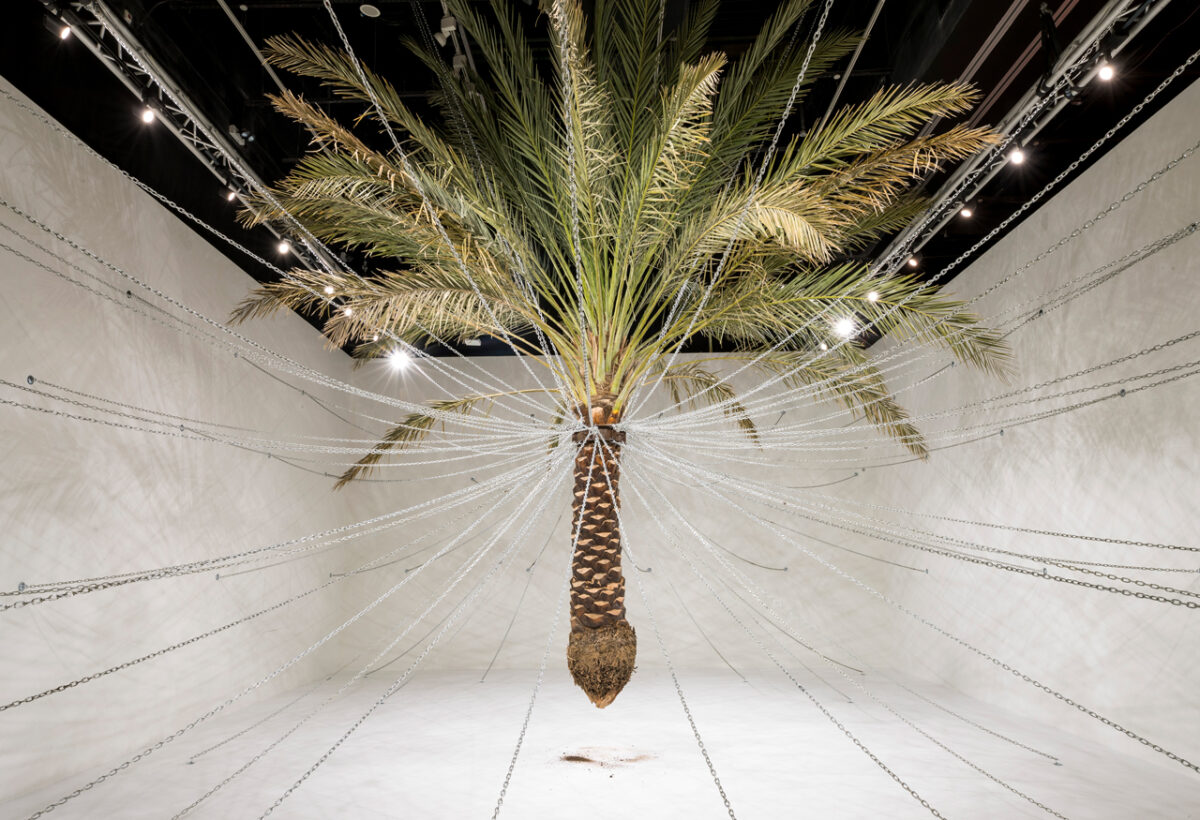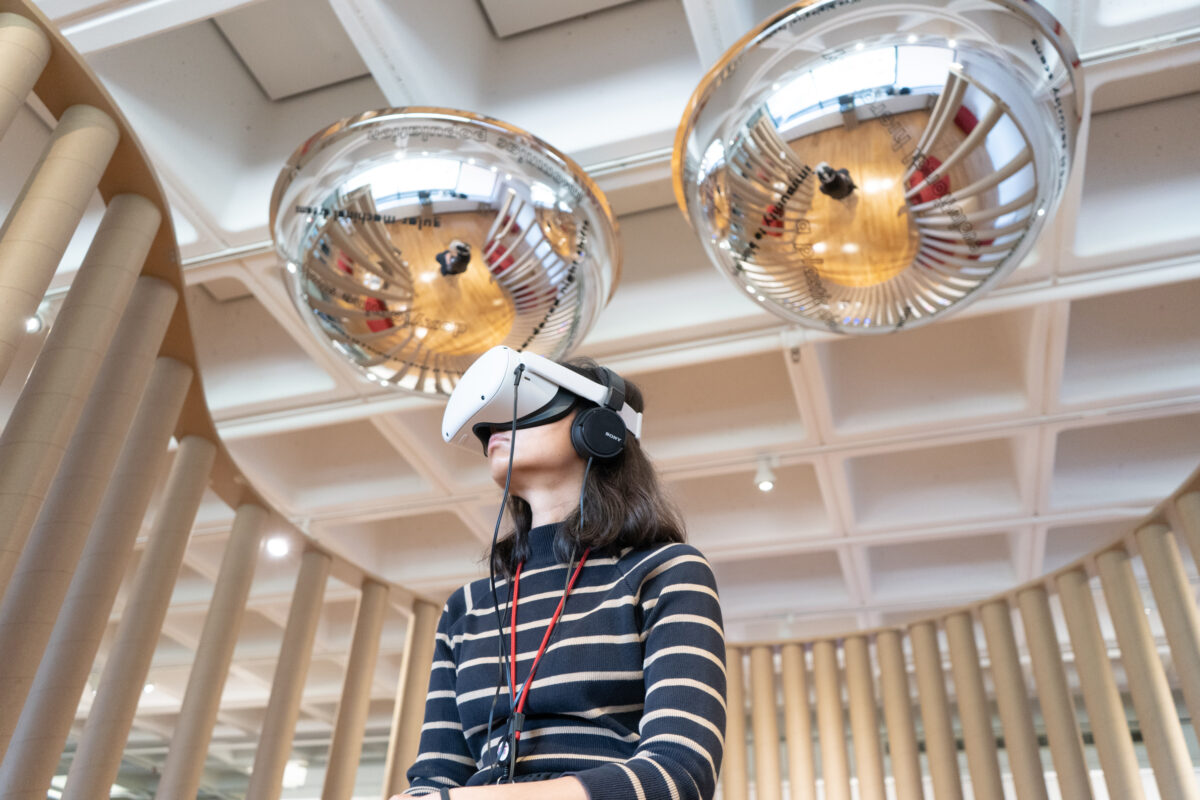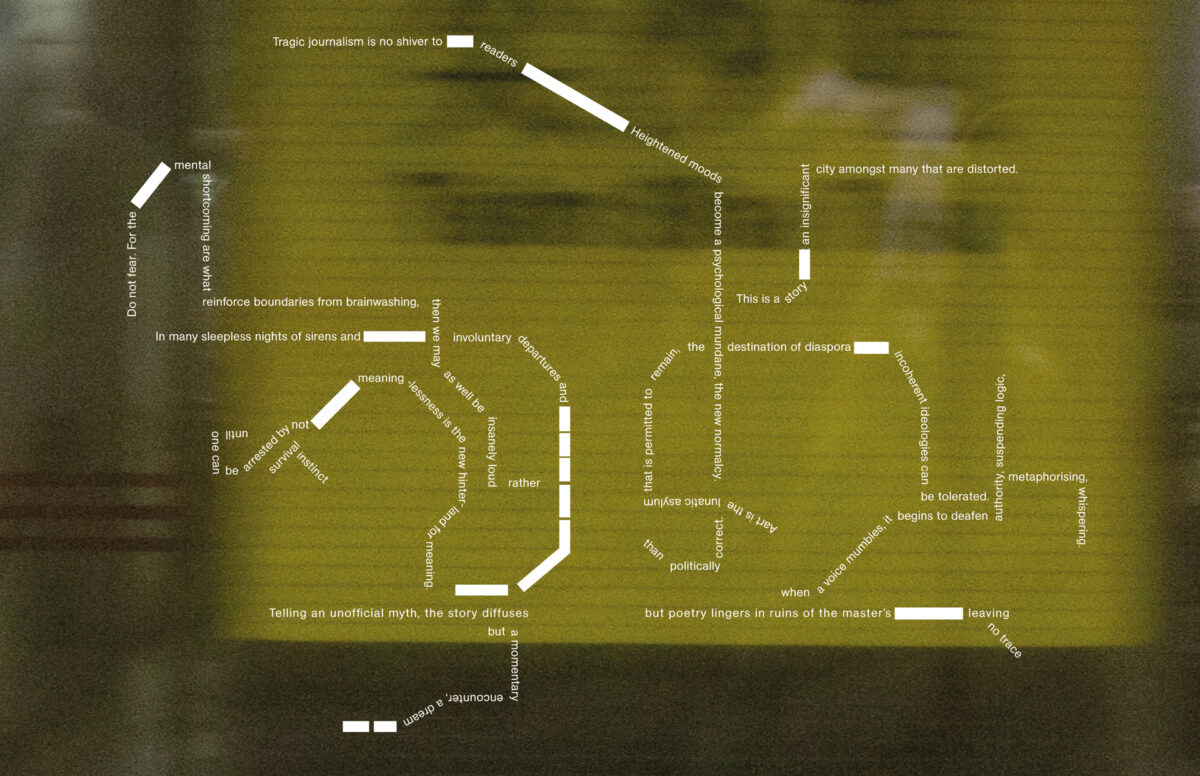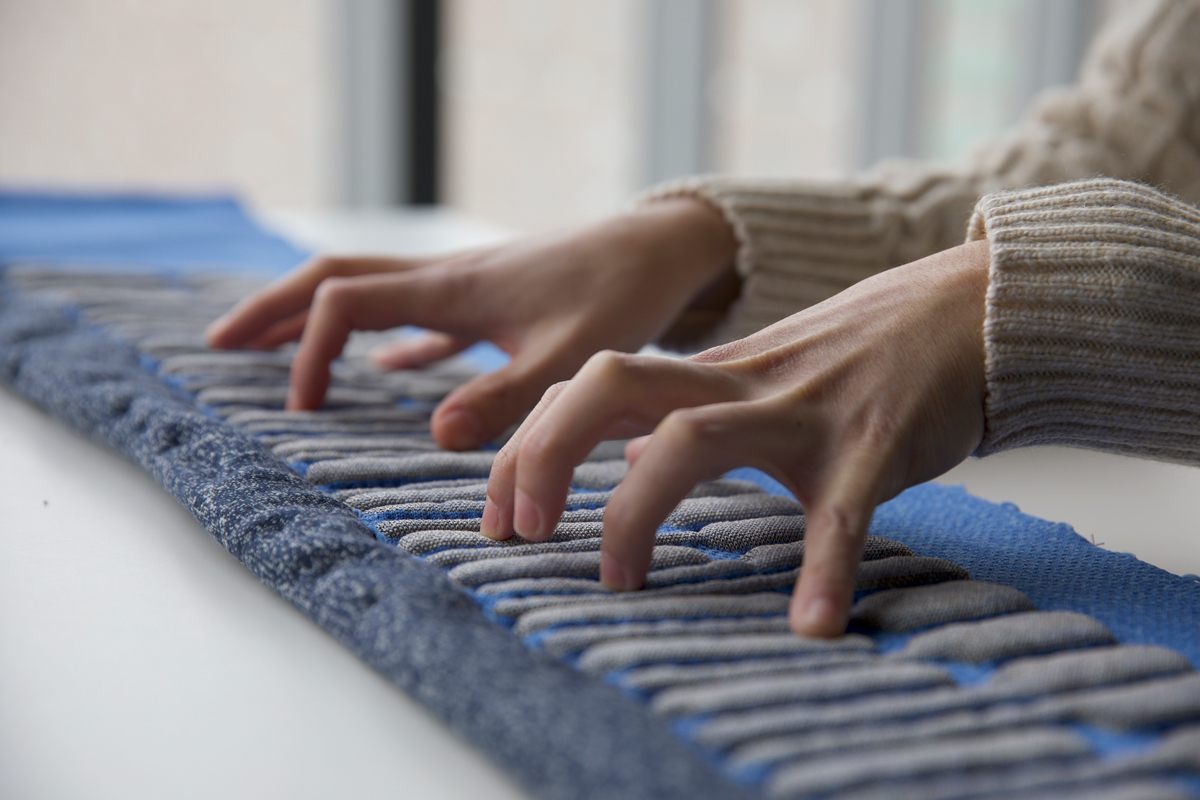Christopher Benton, Kwan Queenie Li, and Irmandy Wickasono
Good art can be both timely and timeless. It can be rooted in a particular event or place and at the same time speak to audiences across oceans and eras and ideologies. Good artists distill their personal experience and vision into a language almost anyone can access.
Good art can be both timely and timeless. It can be rooted in a particular event or place and at the same time speak to audiences across oceans and eras and ideologies. Good artists distill their personal experience and vision into a language almost anyone can access.
The three MIT graduate student artists selected for the 2022 Harold and Arlene Schnitzer Prize in the Visual Arts work in a variety of media and explore a broad range of themes. All of them found the support and freedom to develop their work at MIT.
Students submit a body of work to be considered for the Schnitzer Prize, which was established in 1996. The Schnitzer Prize awards $5,000 to each – student winner. Recipients of the 2022 Schnitzer Prize will display their work in a Wiesner Student Art Gallery show this May.
“Working across geographies, disciplines, and materials, the artistic practices of these three artists demonstrate the diversity of creative work taking place at the Institute at the highest levels,” says Andrea Volpe, Director of the Council for the Arts at MIT (CAMIT). “What unites their practices is their commitment to crossing boundaries and disciplines. Whether achieved through juxtaposition or synthesis, this is the signature of the arts as they are practiced at MIT.”
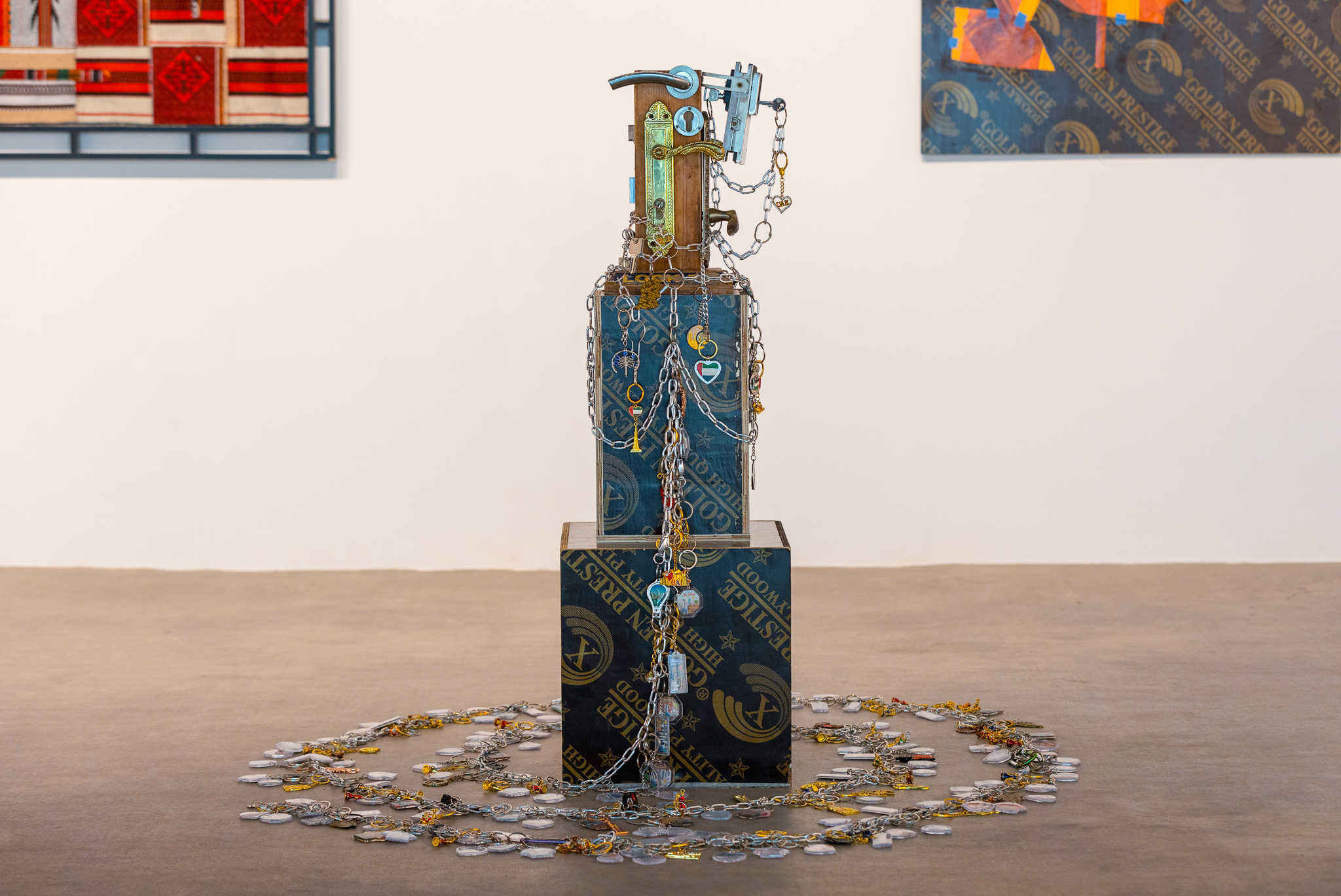
2022 Schnitzer Prize in the Visual Arts recipient Christopher Joshua Benton’s Worked (So & So & On & On & So On & So On). Courtesy of the artist.

Christopher Joshua Benton. Courtesy of the artist.
Christopher Joshua Benton. Courtesy of the artist.
From the Gulf to the Grand Canal
Christopher Benton, a 2023 Master of Science student in the Art, Culture, and Technology (ACT) program, says he came to MIT to tell stories that were not being told. “I’m drawn to questions of diaspora, how people move over time, to stories of working class people,” says Benton. “I want to share stories that may not be well known, and find alternative ways to do that.”
Christopher Benton, a 2023 Master of Science student in the Art, Culture, and Technology (ACT) program, says he came to MIT to tell stories that were not being told. “I’m drawn to questions of diaspora, how people move over time, to stories of working class people,” says Benton. “I want to share stories that may not be well known, and find alternative ways to do that.”
Based in Cambridge and in the UAE, Benton crafts sculptures, photographs, and installations that reframe our understanding of post-colonial identity, migration, and class. His work has been featured in museums, galleries, and in media outlets including Harper’s Bazaar, Vice, and the BBC. In “The World Was My Garden,” a 2021 solo exhibit in Abu Dhabi, Benton used the date palm tree as a symbol to retrace the history of slavery in the Gulf. The work also highlighted the ironic journey of the date palm to California, which is today the world’s second largest producer of dates. This April, Benton mounted a similar installation in Palazzo Franchetti in Venice during the Venice Biennale.
Benton came to MIT after nearly a decade in fashion and advertising; for a while, he directed campaigns for the Chinese Telecommunication giant Huawei for the Middle East, Africa, and India. “I came here because I craved the sort of knowledge one can find in academia,” says Benton, who graduated from the University of Georgia with a degree in English Literature and Journalism in 2011. “At MIT I’m learning how culture is created and circulates. And I have the freedom to explore stories that are not well known, and to develop innovative ways to tell and preserve them, whether in film or dance or installation or even objects that I collect.”

2022 Schnitzer Prize in the Visual Arts Recipient Kwan Q Li’s Infinite Replicas. Courtesy of the artist.
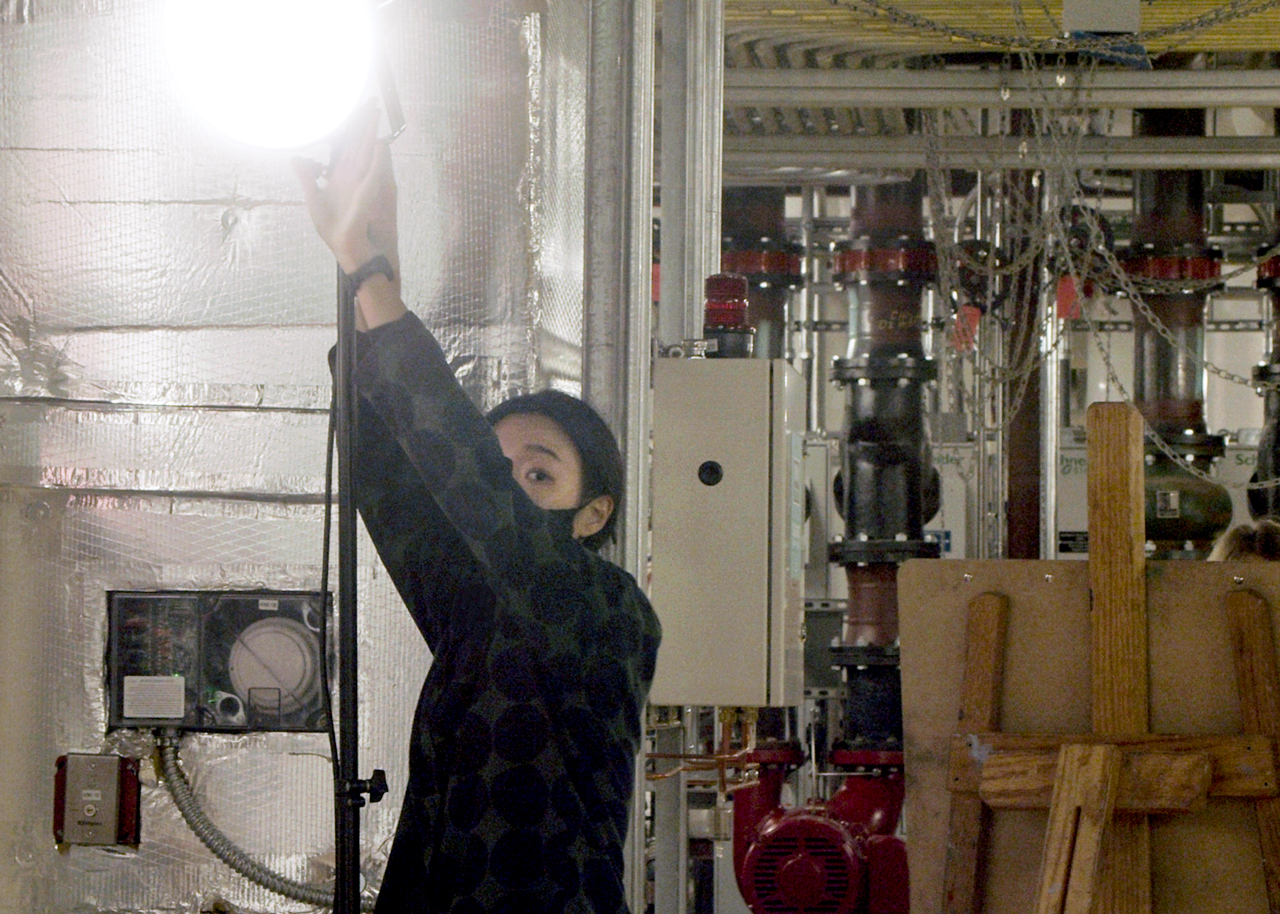
Portrait of Kwan Q Li. Courtesy of the artist.
Christopher Joshua Benton. Courtesy of the artist.
Ambivalence and Resistance
Working in lens-based media, performance, and writing, Kwan Queenie Li, a graduate artist at the Art, Culture, and Technology program (’22), explores the contours and contrasts between interdisciplinary contexts, and the ambivalence between culture and technology. “Infinite Replicas,” a 14-minute video Li developed during a three-month project with MIT.Nano Lab, plays on a clever art-science juxtaposition: a life drawing class the artist held in the hyper-antiseptic context of a laboratory penthouse. The visual contrasts between the two environments are stunning and very effective. “We were surrounded by technology that can give unprecedented visibility to human biology,” says Li. “And yet the intricacy of body politics such as gender issues remained unresolved.”
Her works also depict and explore landscapes that seem increasingly conceived for machines and technology instead of people. “No Humans in the City, but Weeds,” a multimedia project she showed at the Hong Kong pavilion at the 2021 Venice Architecture Biennale, documents how urban areas refitted to house data centers and their massive server banks. “In the post-human future of urban landscape, we humans may become peripheral as weeds,” she explains. “But I think of weeds as resistance. Because they never die out, no matter how much we build.”
In “Poems are the Unleashed Tides of Muteness,” Li presents a cycle of stop-motion photographs she took on the Hong Kong metro in 2019, when street protests caused authorities to close various metro stations, trapping metro riders in an endless underground loop. The video essay is a compelling 13-minute journey that evokes contemplations on linear progress and poetic alternatives.

2022 Schnitzer Prize in the Visual Arts Recipient Irmandy Wicaksono’s KnittedKeyboard. Image courtesy of the artist/MIT Media Lab.

2022 Schnitzer Prize in the Visual Arts Recipient Irmandy Wicaksono. Courtesy of the artist.
Christopher Joshua Benton. Courtesy of the artist.
It All Started With Gaga
The first time Irmandy Wicaksono, PhD ’23 Media Arts and Sciences, realized that an electrical engineer could find a place in the arts and design was when he helped design two dresses for Lady Gaga. “I was an undergraduate engineering student in England and had just landed a one-month internship with StudioXO in London,” says the Indonesian engineer and artist. “I took part in the development of two mechatronic dresses for Lady Gaga to wear at the iTunes festival in London and to show at the ArtRave event in Brooklyn.
Wicaksono works in smart textiles and wearable technology with applications ranging from health and well-being to musical controllers and interactive dance. Tapis Magique, (The Magic Carpet,) is a large-scale knitted electronic textile carpet that senses the pressure of human steps and posture and transforms that pressure into sound to bridge the physical with the digital. Collaborated during the pandemic with synth artist Don Derek Haddad and dancer Loni Landon—the three worked on the project six feet apart in a sixth-floor Media Lab room—Tapis Magique won the Student Innovation Award at the 2022 South By Southwest Festival (SXSW). “I hope that my textile interfaces immerse the users in this unique synesthetic experience without fully transporting them into the digital world,” says Wicaksono.
Wicaksono’s ties to textiles are both cultural and personal. Indonesia has a rich textile tradition, with regional patterns as in Batik, Ikat, and Songket. As a boy, he watched his grandmother work her enormous home looms, and still remembers the sounds they made. “Textiles and electronics share many processes,” says Wicaksono, who hopes one day to run a design studio working at the intersection of art, science, and technology. “We draw electric wires the same way we draw thread. We print electronic circuit boards in almost the same way we print batik. I’d like to continue to make these connections, between traditional practices in my country and the things I’ve learned abroad.”
Written by Ken Shulman
Editorial direction by Leah Talatinian, Arts at MIT
The Council for the Arts at MIT presents several awards annually to MIT students who have demonstrated excellence in the arts, including the Laya and Jerome B. Wiesner Student Art Award and the Louis Sudler Prize.

